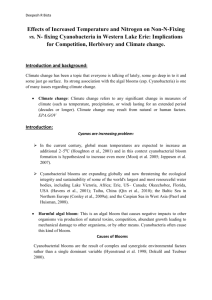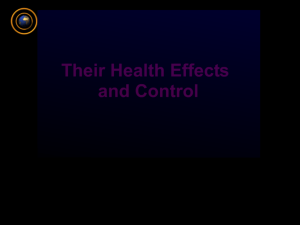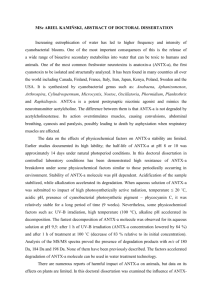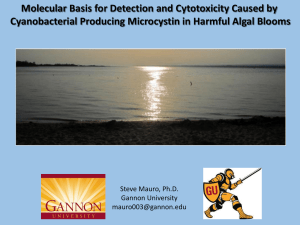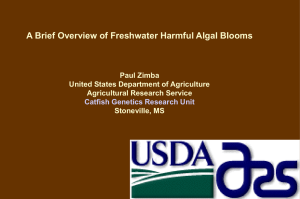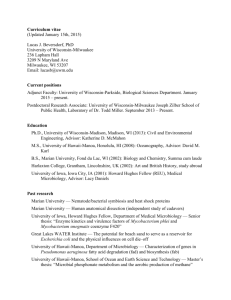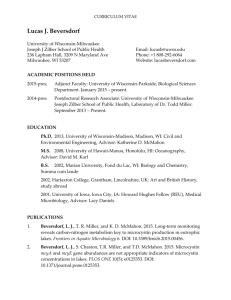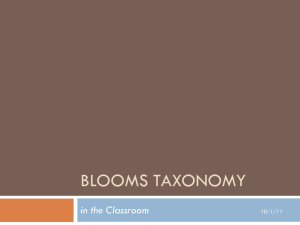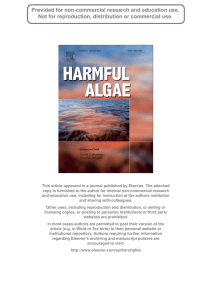Présentation PowerPoint - Cyanobacterial Blooms: Toxicity
advertisement
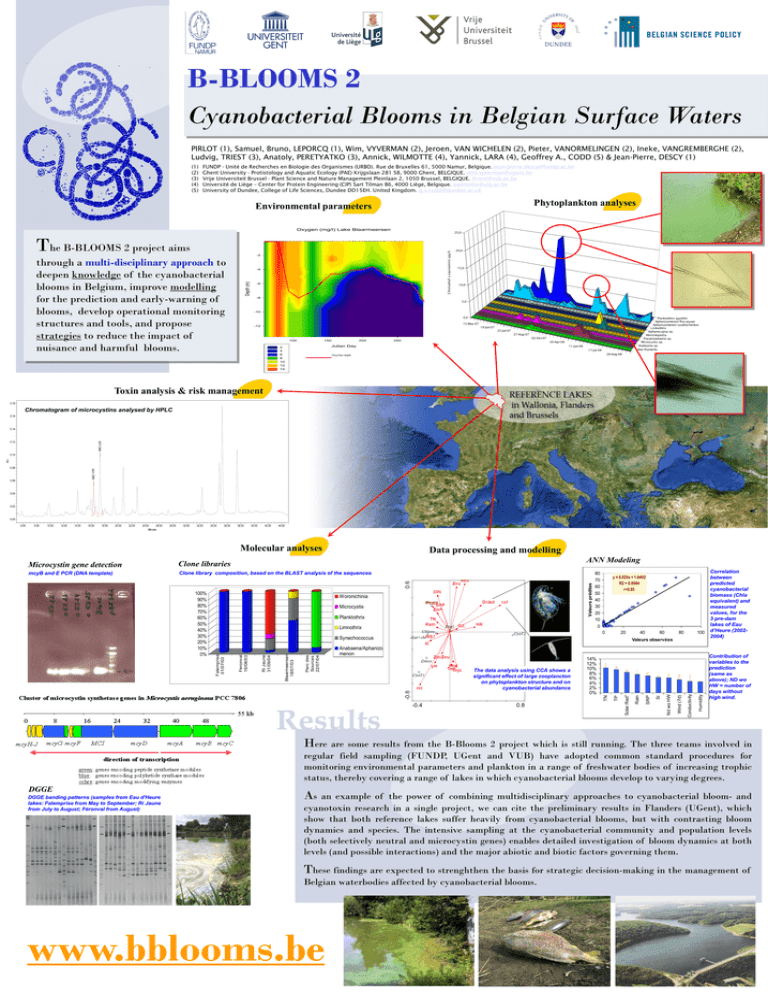
B-BLOOMS 2 Cyanobacterial Blooms in Belgian Surface Waters PIRLOT (1), Samuel, Bruno, LEPORCQ (1), Wim, VYVERMAN (2), Jeroen, VAN WICHELEN (2), Pieter, VANORMELINGEN (2), Ineke, VANGREMBERGHE (2), Ludvig, TRIEST (3), Anatoly, PERETYATKO (3), Annick, WILMOTTE (4), Yannick, LARA (4), Geoffrey A., CODD (5) & Jean-Pierre, DESCY (1) (1) (2) (3) (4) (5) FUNDP - Unité de Recherches en Biologie des Organismes (URBO). Rue de Bruxelles 61, 5000 Namur, Belgique. jean-pierre.descy@fundp.ac.be Ghent University - Protistology and Aquatic Ecology (PAE) Krijgslaan 281 S8, 9000 Ghent, BELGIQUE. wim.vyverman@ugent.be Vrije Universiteit Brussel - Plant Science and Nature Management Pleinlaan 2, 1050 Brussel, BELGIQUE. ltriest@vub.ac.be Université de Liège – Center for Protein Engineering (CIP) Sart Tilman B6, 4000 Liège, Belgique. awilmotte@ulg.ac.be University of Dundee, College of Life Sciences, Dundee DD15EH. United Kingdom. g.a.codd@dundee.ac.uk Phytoplankton analyses Environmental parameters Oxygen (mg/l) Lake Blaarmeersen Chlorophyll a equivalents (µg/l) The B-BLOOMS 2 project aims 25,0 -2 through a multi-disciplinary approach to deepen knowledge of the cyanobacterial blooms in Belgium, improve modelling for the prediction and early-warning of blooms, develop operational monitoring structures and tools, and propose strategies to reduce the impact of nuisance and harmful blooms. Depth (m) -4 -6 20,0 15,0 10,0 -8 5,0 -10 0,0 Planktothrix agardhii Aphanizomenon flos-aquae Aphanizomenon issathschenkoi Limnothrix Aphanocapsa sp. Merismopedia Pseudanabaena sp. Microcystis sp. Anabaena sp. other filaments 15-May-07 -12 19-Jun-07 25-Jul-07 27-Aug-07 100 150 200 250 02-Oct-07 30-Apr-08 11-Jun-08 Julian Day 2 4 6 8 10 12 14 17-Jul-08 28-Aug-08 Oxycline depth Toxin analysis & risk management 0.18 Chromatogram of microcystins analysed by HPLC 0.16 0.14 MC-LR 0.12 AU 0.10 MC-YR 0.08 0.06 0.04 0.02 0.00 28.00 30.00 32.00 34.00 36.00 38.00 40.00 42.00 44.00 Molecular analyses Data processing and modelling ANN Modeling Microcystin gene detection Clone libraries mcyB and E PCR (DNA template) Clone library composition, based on the BLAST analysis of the sequences 80 y = 0.829x + 1.0402 R2 = 0.8984 r=0.95 Woronichinia Microcystis Planktothrix 60 50 40 30 20 10 0 Limnothrix 0 20 40 60 80 100 Valeurs observées Anabaena/Aphanizo menon The data analysis using CCA shows a significant effect of large zooplancton on phytoplankton structure and on cyanobacterial abundance 14% 12% 10% 8% 6% 4% 2% 0% TN Parc des Sources 22/07/04 Blaarmeersen 18/07/03 Ri Jaune 31/09/04 Synechococcus Feronval 19/08/03 100% 90% 80% 70% 60% 50% 40% 30% 20% 10% 0% Valeurs prédites 70 Results Humidity 24.00 26.00 Minutes Conductivity 22.00 Wind (7d) 20.00 Nd wo HW 18.00 Si 16.00 SRP 14.00 Rain 12.00 Solar Rad° 10.00 TP 8.00 Falemprise 01/07/03 6.00 Correlation between predicted cyanobacterial biomass (Chla equivalent) and measured values, for the 3 pre-dam lakes of Eau d’Heure (20022004) Contribution of variables to the prediction (same as above); ND wo HW = number of days without high wind. Here are some results from the B-Blooms 2 project which is still running. The three teams involved in regular field sampling (FUNDP, UGent and VUB) have adopted common standard procedures for monitoring environmental parameters and plankton in a range of freshwater bodies of increasing trophic status, thereby covering a range of lakes in which cyanobacterial blooms develop to varying degrees. DGGE DGGE banding patterns (samples from Eau d'Heure lakes: Falemprise from May to September; Ri Jaune from July to August; Féronval from August) As an example of the power of combining multidisciplinary approaches to cyanobacterial bloom- and cyanotoxin research in a single project, we can cite the preliminary results in Flanders (UGent), which show that both reference lakes suffer heavily from cyanobacterial blooms, but with contrasting bloom dynamics and species. The intensive sampling at the cyanobacterial community and population levels (both selectively neutral and microcystin genes) enables detailed investigation of bloom dynamics at both levels (and possible interactions) and the major abiotic and biotic factors governing them. These findings are expected to strenghthen the basis for strategic decision-making in the management of Belgian waterbodies affected by cyanobacterial blooms. www.bblooms.be

